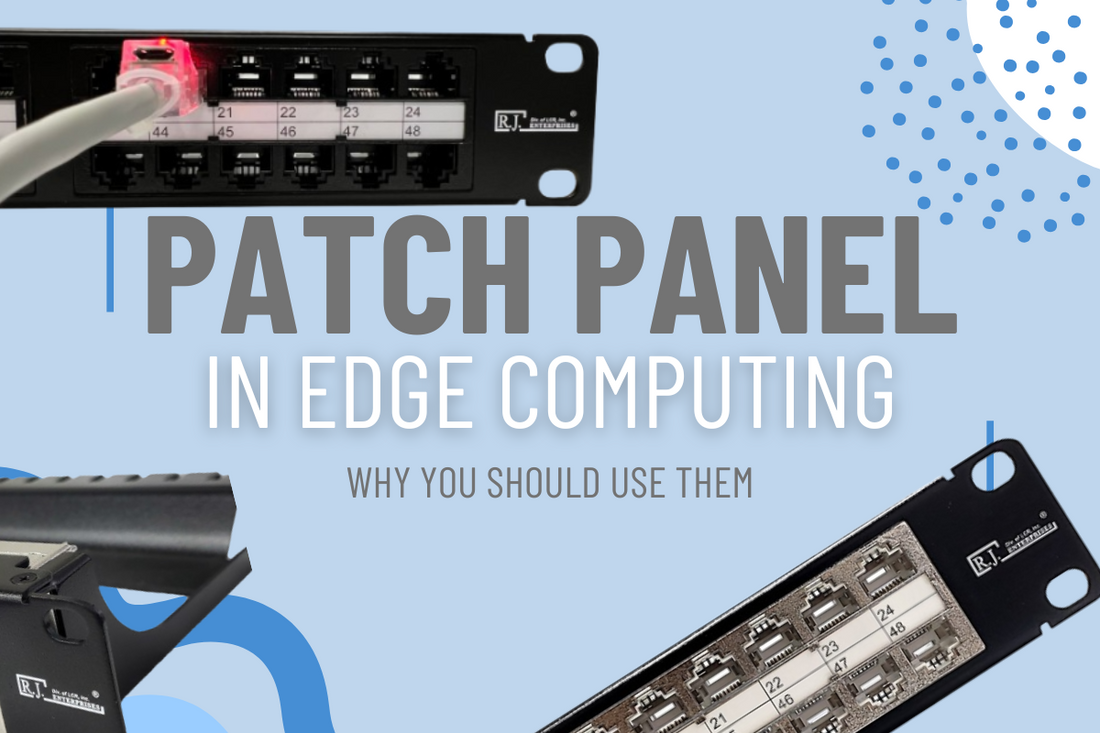
Why You Should Use High Density Patch Panels in Edge Computing
Share
Computer Networking and the Ideal Environment
Networking has become so ubiquitous in our everyday lives to the point of us taking it for granted. We open our phones and browse the internet without a thought. We send a text message or an email and never wonder about how the technology behind it actually works. But the complexity and scope of computer networking is immense (or as the ancient Greek philosopher Aristotle would say, “the whole is greater than the sum of its parts”). So much goes into ensuring our interconnected devices are able to exchange and transmit data through the network. First and foremost, there are the devices/nodes that transmit data. These data packets are routed either through wireless or wired means, which are then sent to the receiver's address and then processed and turned into the content we wanted to share.
But for all this to work, another aspect that we must pay attention to is — the environment.
An ideal environment for computing usually involves a place with reliable power supply, enough space for expansion, proximity to end users, and effective climate control. But in certain situations, achieving enough processing power may involve trade-offs or general limitations. Harsh environments (where temperatures can vary on both extreme ends, humidity can reach high levels, abundance of dust and vibrations) is one such case and can significantly shorten the lifespan of your networking equipment.
Environmental Challenges in Edge Computing
In edge computing, this is more of a problem compared to its counterpart in cloud computing or just traditional data centers. This is because edge computing means servers are operating closer to the end user. Whether it’s a busy and dust filled industrial complex or somewhere remote like an oil rig, these environments can have unsuitable conditions for networking equipment.
These conditions can lead to performance degradation, hardware failures, and increased maintenance costs. For example, in edge computing devices that operate in areas where temperature can swing between extreme heat and freezing cold, overheating can lead to thermal throttling (reduced processing speed) and extreme cold can cause condensation (potential short circuiting).
In environments where there are high levels of airborne dust or debris, the accumulated dust can lead to overheating and degrade your network signal transmission. And in environments where your equipment is exposed to constant mechanical vibrations, your cable connections could be loosened and the stress can create fractures.
The solution? Your networking equipment needs to excel in multiple areas — space-efficiency, durability, and performance — to operate optimally.
Using Patch Panels // Why You Should Use RJ Enterprises Patch Panels
Patch Panel Brief Benefits
Patch panels are especially exceptional components of networking infrastructure, needless to say for edge computing environments. If you are unfamiliar, patch panels are explicitly designed to assist in organizing and managing your cables into a structured system. High density patch panels are a variation that features additional ports, but with an extra caveat of being of a smaller size than a traditional panel sporting the same number of ports. For high density patch panels, port-density is the name of the game.
General Benefits of Patch Panels
- Durable and ruggedized design built to withstand mechanical stress and environmental hazards.
- Enhanced cable management that enables users to neatly arrange cable in small confined spaces.
- Improved airflow from less cable congestion.
- Cost effective solution during maintenance due to the ability to replace a single patch cable instead of rewiring an entire system.
Extra Benefits of RJ Enterprises® Patch Panels
- Feed-through patch panels that allows for easy insertion of cables without the need to use punch down tools — saving up to 90% time during setup.
- High speeds (up to 10 Gbps) that ensures your network setup (especially ones involved in edge computing) are future proofed and need less replacements.
- Protection against EMI and alien crosstalk due to the shielding technology incorporated to patch panels.
- Collection includes specially designed patch panels and high density (48-ports in 1U) patch panels that saves you essential space in limited areas.
Examples of Patch Panel Benefits
Use Case: 5G Base Station
In edge computing, servers and edge devices are usually more compact/compartmentalized — meaning there is less space. Take 5G base stations for example. These stations are typically lightweight and small in size, around the size of a shoebox. Furthermore they are usually installed on light poles or building rooftops, or in other words exposed environments. All factors pointing towards a less than ideal environment for your computing processes.
High density patch panels, such as the RJ-HDPP-48-C6, can assist in this case by offering a robust and sound networking component that also helps maximize space usage. Durability wise, they are built for wear and tear. Because they serve as a centralized hub for cables and connections, patch panels must be able to handle the strain from the constant reorganization. They also do not contain complex mechanical parts like gears or motors that are more susceptible to failure.
Use Case: Micro Data Centers
Another use case example would be micro data centers. These data centers are usually deployed by streaming services into multiple cities because they excel at caching content closer to users (reducing latency).
Again taking the RJ-HDPP-48-C6 as an example, not only can you easily consolidate your fiber optic and Ethernet connection into a single rack unit (1U), you can also support high bandwidth application usages (4K video streaming, real time content delivery, etc.) with speeds up to 10 Gbps. Even smaller benefits like improving cooling efficiency by reducing cable congestion can’t be overlooked. In a micro data center, space is limited and constrained. Fitting strong performing cooling systems found in larger data centers is simply not possible. Optimizing every aspect and detail then becomes important.
Use Case: General Industrial Environments
What about industrial environments filled with heavy machineries, conveyor belts, robotic systems, and welding equipment? This kind of environment can generate an abundance of vibration and dust, not to mention strong electromagnetic fields. For computing processes to remain stable and high-performing, they require a ruggedized networking equipment that won’t be easily damaged. Luckily, patch panels like the RJ Enterprises HDPP-48S-C6 and the SDPP-24-C6S come with shielding technology that reduces alien crosstalk and EMI.








